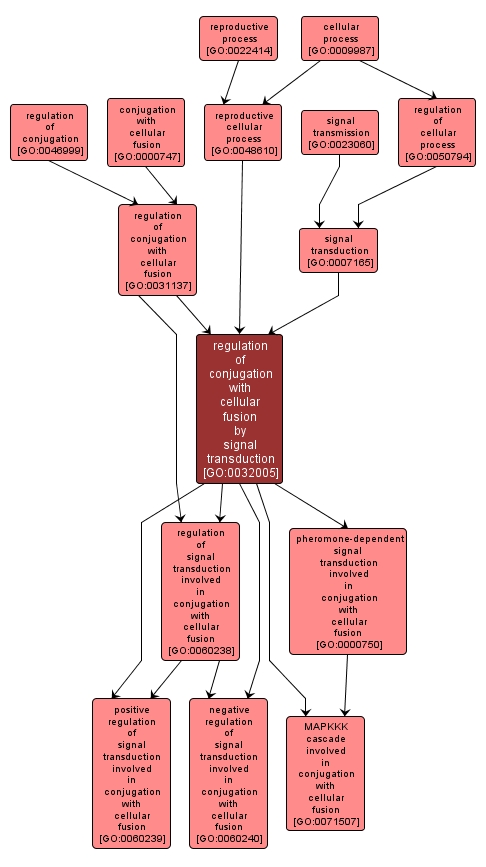GO TERM SUMMARY
|
| Name: |
regulation of conjugation with cellular fusion by signal transduction |
| Acc: |
GO:0032005 |
| Aspect: |
Biological Process |
| Desc: |
The series of molecular signals that bring about the relay, amplification or dampening of a signal generated in response to a cue, such as starvation or pheromone exposure, in organisms that undergo conjugation with cellular fusion. |
|

|
INTERACTIVE GO GRAPH
|














